BROOKLYN & THE “JUMPING SELFIE” (1886)
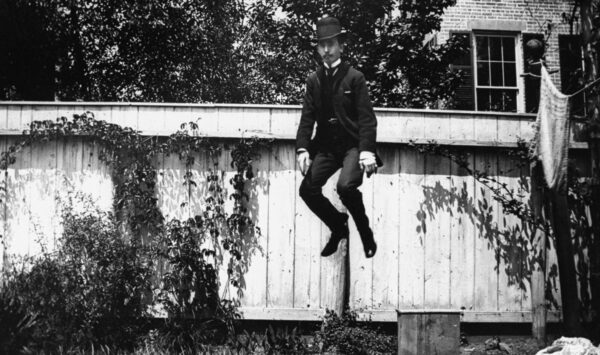
******************************************************************************************************************************** Brownstone Detectives investigates the history of our clients’ homes. The story you are about to read was composed from research conducted in the course of one of those investigations. Do you know the history of YOUR house? ******************************************************************************************************************************** In 1886, there was a LOT of jumping on Livingston Street. That year, a man by the name of Wallace G. Levison, an amateur photographer who lived on the street with his family, was testing a new type of film along with its ability to capture subjects in the process of motion. As the dawn of the 20th century approached, newer, more sensitive film emulsions were being developed that allowed pictures to be taken with faster and faster shutter speeds. Levison was set on experimenting with them. An avid photographer, he used the new technology both as a scientific tool and a recreational activity. In addition to being an amateur photographer, Levison was a chemist, inventor, and lecturer who founded the Departments of Mineralogy and Astronomy at the Brooklyn Institute of Arts and Sciences in the latter half of the 19th century. He may have also invented the concept of the “jumping selfie.” ORGANIZING SHUTTERBUGS Born at 1435 Pacific Street, Brooklyn (where – except for the 1880s-1900s – he would live for most of his life) in 1846, Levison attended Cooper Union, New York City’s prestigious free school for the sciences and arts, and graduated with a BS from Harvard in 1870. He was a member of the New York Mineralogical […]
PARK SLOPE URNS vs. BASEBALL BATS (1914)
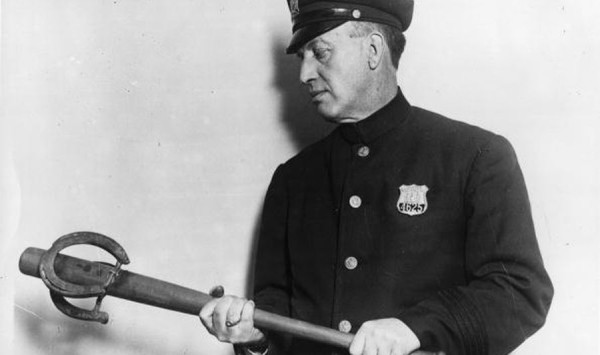
******************************************************************************************************************************** Brownstone Detectives investigates the history of our clients’ homes. The story you are about to read was composed from research conducted in the course of one of those investigations. Do you know the history of YOUR house? ******************************************************************************************************************************** On a still warm September morning in 1914, residents of the homes along the first block of Prospect Park Southwest woke to find something out in front of their houses distinctly off-kilter. As they exited their limestone rowhouses, several of them were shocked to see what appeared to be concrete rubble strewn up and down the block along the sidewalks and within their gates. Leaving their doors and approaching their gates, they began to realize the inanity of the cause – many of their decorative concrete urns, which had been perched peacefully upon the short columns flanking their front gates, had been destroyed overnight. As neighbored surveyed the block, there seemed to be no method to the madness of the demolition of these pieces of architectural ornamentation. Simply put, some neighbors had theirs undisturbed, while others’ urns were a pile of concrete on the sidewalk. The blame was quickly laid squarely at the feet of the local youth – toughs, rowdies, gangs, hoodlums. HOODLUMS It was a common story of the day. Gangs of loafers gathered on corners assaulting women verbally as they passed into the park. Roughs fighting along certain streets at odd hours of the mornings. Rowdies, after drunken trips to Coney Island, ending their nights on a high […]
BOYS DROWNING AT CONEY ISLAND (1889)
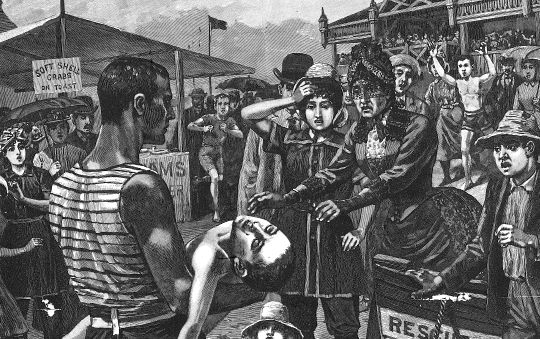
******************************************************************************************************************************** Brownstone Detectives investigates the history of our clients’ homes. The story you are about to read was composed from research conducted in the course of one of those investigations. ******************************************************************************************************************************** Lifesaving at Coney Island has existed since sunbathers have been flocking there to lie along the beach and swim in the surf. As such, there were constantly brave or foolish little boys who thought that they could swim further and further into the briny blue. Many such instances ended in drownings – or near drownings if the lifeguards got to you in time. Two such incidents occurred on one day in 1897. One, “Nathan Nichols, a Negro Boy,” had “drowned in the surf.” Nicholls, 18 years old, who was employed by a feed man on Neptune Avenue, whose custom it was every Sunday to give his employer’s horses a bath in the surf. About noon, Nicholls was riding one of the hoses in about seven feet of water, off the foot of Ocean Parkway when we was suddenly seen to slide from the animals’ back and disappear. When Nicholls did not reappear, a few people on shore who had been watching ran to the police station. A roundsman grappled for the body for an house but failed to locate it. The body had not been recovered. Worse must have been a drowning in the Gowanus Canal where, it might be expected, a boy would be able to grapple his way to shore before sinking into the murky depths. One […]
CONEY’S 6 M.P.H. COASTER OF FEAR (1884)
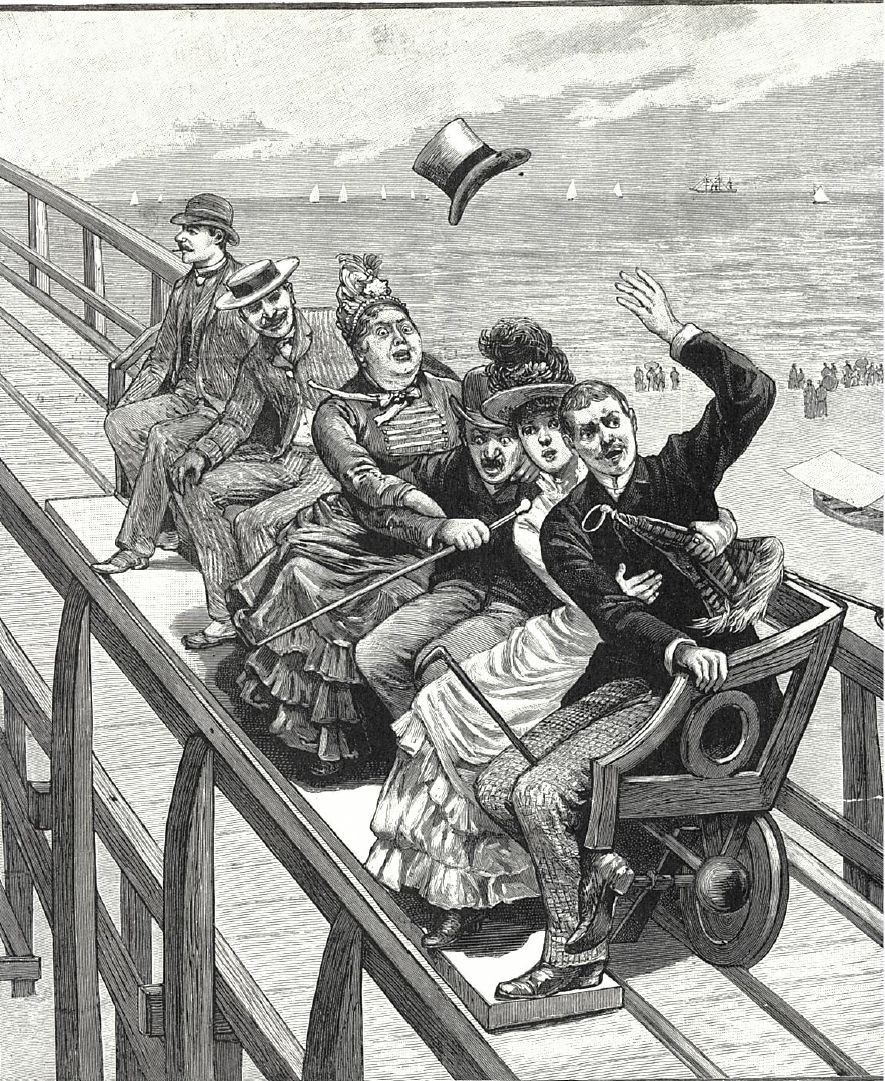
******************************************************************************************************************************** Brownstone Detectives investigates the history of our clients’ homes. The story you are about to read was composed from research conducted in the course of one of those investigations. Do you know the history of YOUR house? ******************************************************************************************************************************** When we research the history of our clients’ homes, we always come across the odd, the interesting, the unbelievable, and the ironic. Sometimes, though, we come across the FUN! In 1884, the original Coney Island thrill-ride was born – its first roller coaster – The Switchback Railway. No, it did not utilize a “90-degree vertical drop, followed by a 100-foot loop and a zero-gravity roll, along with dives, hills and a corkscrew — all within two minutes,” as the current Thunderbolt does. It did not reach speeds of 55 miles per hour. And it did not cost $10 million to build. The Switchback Railway, though, was the first roller coaster designed as an amusement ride in America. It was the coaster that sparked the first wave of the roller coaster mania in the United States. And it warranted LaMarcus Adna Thompson, the creator of the unprecedented coaster, the title “Father of Gravity.” Based upon a coal-mining train that had started carrying passengers as a thrill ride in 1827, to ride the Switchback set you back a mere 5 cents. Riders would climb a tower to board the large bench-like car and then were pushed off to coast 600 feet down the track to another tower. And its speed? Just over 6 […]
TILTING AT FLATBUSH WINDMILLS (1879)
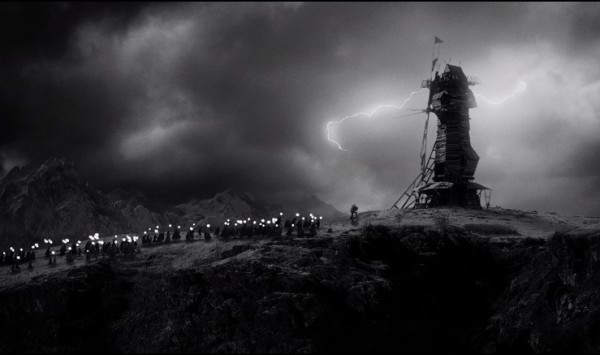
******************************************************************************************************************************** Brownstone Detectives investigates the history of our clients’ homes. The story you are about to read was composed from research conducted in the course of one of those investigations. Do you know the history of YOUR house? ******************************************************************************************************************************** It was iconic like the Williamsburg Bank building (1 Hanson Place) at Flatbush Avenue. It had stood on the same Flatbush farm for 75 years – a relic of our Dutch past and a connection to our Brooklyn roots. Most Brooklyn residents had never seen it – but everyone knew of it. It had even made such an impression on the psyche of 19th century Brooklynites that socialite Gertrude Lefferts Vanderbilt included its destruction in her book, The Social History of Flatbush. And, incredibly, it had even had a special significance to the “colored” people of New York and Brooklyn, as it was used during the Civil War draft riots of 1863 – which had spread from New York to Brooklyn – to shelter much of the city’s black population. By the late 19th century, though, it was no longer operable as a windmill. As landmarks went, however, no one could relegate the structure to any sort of second class status. It was a Brooklyn landmark through and through. But all of that changed on a single night in 1879 when, through the bottom windows, the Vanderveer windmill began to spout flames. CONFLAGRATION! The flames rose so high, filling the eastern expanse of the night’s horizon, that people in the center […]
BENSONHURST BOY EATEN BY LIONS (1914)
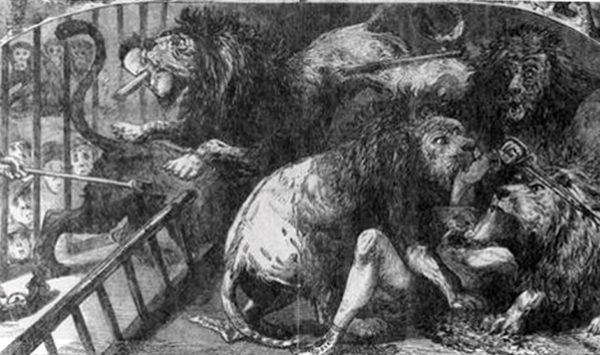
******************************************************************************************************************************** Brownstone Detectives investigates the history of our clients’ homes. The story you are about to read was composed from research conducted in the course of one of those investigations. Do you know the history of YOUR house? ******************************************************************************************************************************** Most people who hear about lions attacking, mauling, and killing human beings envision these violent scenes taking place in the natural habitat of these beasts where they roamed and hunted prey. But the country was mystified by a story that came out a little more than 100 years ago about just such a lion assault – taking place in Chicago. DAREDEVIL DIETRICH AND THE SIX LIONS The son of a wealthy Bensonhurst architect, Emerson D. Dietrich was a graduate of Erasmus High School. He had lived with his parents and his three brothers at 8642 Bay Parkway until he had joined the circus just six months prior to his death. Dietrich, it was learned, had wanted to be near the lions, of which he was fond, and so he had become the manager of Madame Adgie Castillo, the lion trainer. Dietrich, 24, had lived a daredevil’s life, according to his father, who spoke to the Brooklyn Daily Eagle the day after the attack. “He won medals of every sort, but he joined no society,” the elder Dietrich said, “for he was a society in himself. “He had hundreds of friends who came to see him. He didn’t need a society. Then in 1909, he graduated and, for the first time we, […]
CONEY LOOP SENDS GIRL TO ASYLUM! (1901)
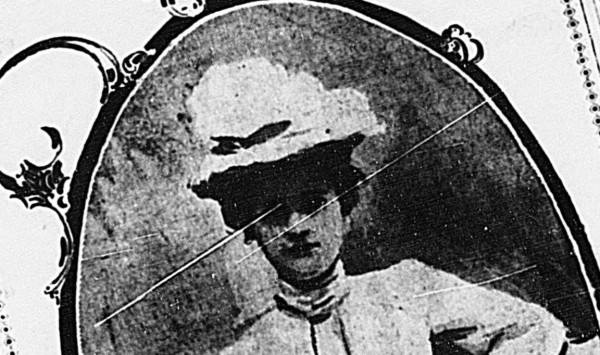
******************************************************************************************************************************** Brownstone Detectives investigates the history of our clients’ homes. The story you are about to read was composed from research conducted in the course of one of those investigations. Do you know the history of YOUR house? ******************************************************************************************************************************** “Oh, mamma! They tied me in the ‘loop the loop’ and I shall die. My head is on fire!” So cried Bertha Zwickler who earlier that day had ridden Coney Island’s latest “attraction,” the “Loop The Loop,” a sort of looping roller coaster that was among the first ever built. The day after her ride on what the New York Evening World referred to as the “idiots’ joy,” Bertha lay babbling incoherently on Ward’s Island in the Manhattan State Hospital for the Insane. RAGE AGAINST THE MACHINES It was a strange story. It was not the reasoning, though, behind this new “rage against the machines.” It seemed that the powers that were in the city had simply had enough of the madly raging carnival atmosphere of Coney Island, which, according to its chieftains, had broken out and gone beyond all moral and ethical boundaries for the period. The Evening World sensed this wickedness incarnate and the political atmosphere brewing, and so they decided to make hay with this story. They literally foamed at the mouth over the Loop the Loop, describing Zwickler after the event: “She was the main support of a family of seven, and in her ravings the helplessness of those to whom she devoted her young life is […]
SO A TAXICAB JUMPS INTO A FOUNTAIN… (1909)
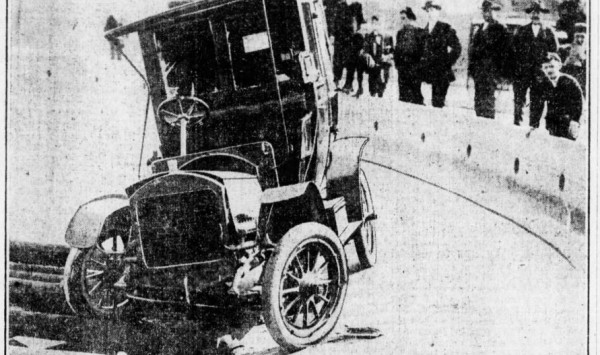
******************************************************************************************************************************** Brownstone Detectives investigates the history of our clients’ homes. The story you are about to read was composed from research conducted in the course of one of those investigations. Do you know the history of YOUR house? ******************************************************************************************************************************** When Brooklyn woke up one April morning in 1909, there in Prospect Park Plaza’s “Electric Fountain” sat a little blue taxicab. To many, the thing appeared as though it had always belonged there. Some wondered whether they’d simply not noticed it all along. But others realized that something was wrong. Something was certainly wrong. THE CASE OF THE IMPETUOUS TAXICAB It seems as though the Grand Army Plaza has always had a fountain. But back when the plaza was called Prospect Park Plaza and it encompassed a larger amount of land, that fountain was much larger and took up much more space. The fountain was then what was called an “electric fountain,” and after it was installed it would attract people by the thousands each year when the lights and the water were turned on. One year, after the winter had passed and after the water was supposed to have filled the reservoir, with the jets darting, and the lights dancing, the fountain sat silent. So, as popular as the fountain was to Brooklyn, the reporters of the city had descended upon Parks Commissioner Kennedy about it’s inactivity. And in the midst of the hubbub – came the crash. HOW IT ALL CAME ABOUT It was 11:30 on a Sunday night […]